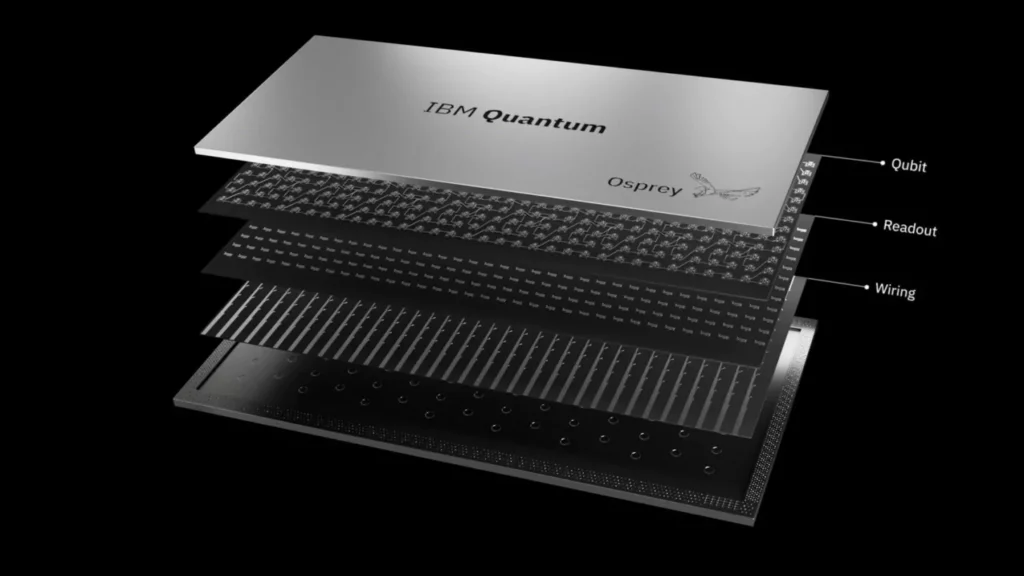The Osprey quantum processor, introduced by IBM, features an amazing 433 quantum bits, or qubits, and requires continuous cooling from a cryogenic cooling system. The latest IBM Osprey quantum processor is being developed with data centers and high-performance computing in mind. In the past, IBM created the Eagle quantum processor, which offered 127 qubits of processing capacity for HPCs and data centers.
The current iteration of IBM Osprey delivers a 3% increase in computational power over the prior model. Cryogenic cooling is necessary for the IBM quantum processor to maintain temperatures at zero degrees. The business notes that although the processor’s operation is fairly loud, it is also sensitive to outside noises.

To increase endurance and reduce the high sounds emitted from the quantum processor, IBM Osprey uses specifically designed wiring that offers improved signal routing and a redesigned device configuration.
The cost of IBM’s data transport cable is reduced, making it 70% more inexpensive to achieve the same outcomes as the Eagle quantum processor. The corporation will be better able to “commercialize” the most recent designs thanks to this cost-saving feature. The updated Osprey platform fits into the plan for creating quantum systems that will be used in 2019.
The performance of the IBM Osprey, which increased from 1.4K Circuit Layer Operations Per Second, or CLOPS, is 10 times more efficient than the company’s Eagle quantum processor. Additionally, it increased the quantum volume from 128 QV to 512 QV from its predecessor.

The business showcased its most recent Quantum System Two, which provides a modular architecture for businesses and organizations to adapt to a single or more detailed strategy for their infrastructures.
Also read:








